New oral history release: Samuel Barondes
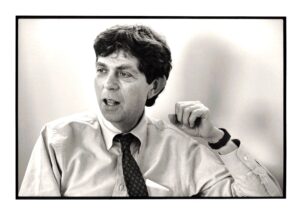
Samuel Barondes is a psychiatrist and neuroscientist at the University of California San Francisco (UCSF) who, over the course of his exceptional career, helped bridge those two fields as a researcher, author, and builder of interdisciplinary programs. Sam and I video-recorded over eighteen-hours of his life narrative at his home in Sausalito in 2019, which resulted in a rich 390-page transcript including an appendix with photographs of his family, dear friends, and fellow researchers. Parts of Sam’s oral history explore meta-themes in his life, from his memories about researching the molecular biology of memory-formation in our brains, to the human connections and collaborations Sam nurtured while investigating the ways neural synapses make new connections. Throughout, Sam’s oral history reflects his abiding fascination with what makes people tick—at the molecular level in cells and synapses, and metaphorically in people’s hearts and souls.
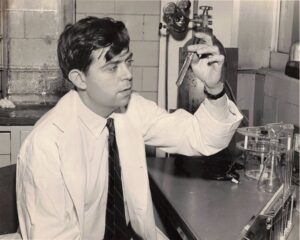
In many ways, Sam Barondes’s life reflects a kind of American utopia. Sam was born during the Great Depression in New York City. As the only child to Jewish immigrants who received little formal schooling, Sam was the first in his family to attend college. In the 1950s, he earned an Ivy League education and became a medical doctor before launching his career as a research scientist at some of the world’s most acclaimed institutions. Sam trained in clinical medicine and psychiatry at several Harvard teaching hospitals before becoming a postdoctoral trainee in the early 1960s at the National Institutes of Health. There, Sam was introduced to the new science of molecular biology by University of California alumnus Gordon Tomkins, and Sam participated in Marshall Nirenberg’s Nobel Prize-winning studies that deciphered the genetic code. In his subsequent career, Sam used this biomolecular perspective to make novel discoveries of his own, to enrich our understanding of how human brains work, and to build new institutions to uplift the work of others.
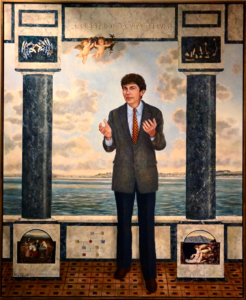
Along his life journey, Sam found love, experienced tragedy, and found love again, all while fostering deep, life-long friendships with other exceptional researchers, including Sydney Brenner, Francis Crick, Eric Kandel, and other luminaries whom Sam discusses in his oral history. In 1970, Sam moved west with his own family to live along the California coast, first in La Jolla where he raised two daughters, and now in Sausalito, where his stunning home overlooks the San Francisco Bay from an ocean-front property once owned by William Randolph Hearst. Sam spent most of his career at the University of California, first at its San Diego campus (UCSD 1970-86) as a founding Professor of Psychiatry and in the interdepartmental Neuroscience Program. He then moved to its San Francisco campus (UCSF 1986-) where he was Chair of Psychiatry and Director of the Langley Porter Psychiatric Institute before founding the Center for Neurobiology and Psychiatry as the Jeanne and Sanford Robertson Endowed Chair. Sam also held many editorial and advisory positions including co-founding and serving for ten years as President of the McKnight Endowment Fund for Neuroscience. His honors include election to the National Academy of Medicine and the American Academy of Arts and Sciences.
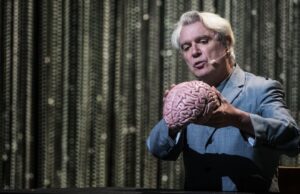
During the shelter-in-place orders of 2020, Sam Barondes came to my mind while watching David Byrne’s Broadway performance of American Utopia, as filmed by Spike Lee and streamed into my home. The opening song of American Utopia begins with Bryne holding a plastic model of a brain and singing the song “Here.” While pointing to different sections of the brain, Bryne sings, “Here is a region of abundant detail. Here is a region that is seldom used. … As it passes through your neurons, Like a whisper in the dark, Raise your eyes to one who loves you. It is safe right where you are.” The song continues before concluding with a question: “Here is an area of great confusion. Here is a section that’s extremely precise. And here is an area that needs attention. Here’s the connection with the opposite side … Here is something we call elucidation. Is it the truth? Or merely a description?” At the end of “Here,” Bryne holds the brain aloft like Hamlet contemplating poor Yorick’s skull. Here, in his oral history, Sam Barondes shares his truth—from his own experiences elucidating the molecular-workings of brains, to his work building institutions where his colleagues continue advancing biomolecular psychiatry.
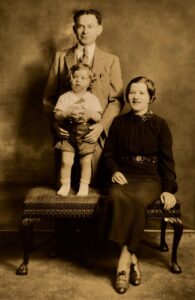
Samuel Barondes (age 2) standing with his father Solomon Barondes and his mother Yetta Barondes in Brooklyn, New York in 1935.
Furthermore, the metaphor of connections and how they evolve was central to both Sam Barondes’s oral history and to David Bryne’s American Utopia performance. Fruitful and long-lasting human connections animate Sam’s story, especially throughout his remarkable scientific career. Similarly, Bryne’s opening monologue in American Utopia begins: “I read that babies brains have hundreds of millions more neural connections than we do as adults and that, as we grow up, we lose these connections.” Bryne continued, “Well, what happens is, we keep the connections that are useful to us. And yes, there’s a process of pruning and elimination, and we get rid of a lot of the others, until the ones that are left define who we are as a person, who we are as people, they define how we perceive the world, and the world appears to make some kind of sense to us.” Here, in his published transcript, Sam shares how connections—both human and neural—helped him make sense of his world.
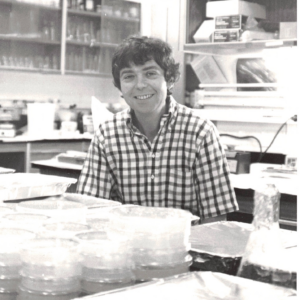
Throughout Sam’s interdisciplinary career in science, he authored over 200 original research articles in leading journals including Science, Nature, Proceedings of the National Academy of Sciences of the United States of America (PNAS), Cell, Journal of Biological Chemistry, Journal of Neuroscience, Journal of Neurochemistry, and Journal of Cell Biology. Among his many publications that Sam and I discussed were his two back-to-back 1962 publications in Science with Marshall Nirenberg, which were associated with Nirenberg’s Nobel Prize-winning research with poly-U to decipher the genetic code. Sam and I also reviewed his many years of research on cell adhesion and sugar-binding proteins, including his discovery of galectins, a class of proteins that bind to specific complex beta-galactosides. Throughout his interviews, Sam spoke about what motivated much of his career, some of which he shared in his June 1990 article in the Journal of Neuroscience, “The Biological Approach to Psychiatry: History and Prospects.” In the clip below, Sam recalls his early notion in 1962 that, “Maybe psychiatry is molecular biology?”
Sam and I also discussed his numerous books written for popular audiences. We spoke about his enjoyable and deeply informative book Molecules and Mental Illness, published by Scientific American Library in 1993 (revised in 1999). We discussed his books Mood Genes: Hunting for Origins of Mania and Depression (1998); Better Than Prozac: Creating the Next Generation of Psychiatric Drugs (2003); and Making Sense of People: Decoding the Mysteries of Personality (2011). In 2014, Sam published a book of light verse that I now read to my young daughter titled Before I Sleep: Poems for Children Who Think. His poem “Brain Dials” appears in the appendix to his oral history. Sam also wrote a substantial poem called “Recapitulation (In Verse)” that he published at the end of Molecules and Mental Illness, and which brilliantly summarizes the entire book. In the clip below, Sam reads aloud a portion of his inventive poem during his final oral history interview.
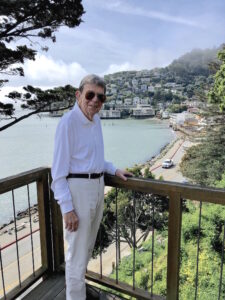
Here, again, Sam’s oral history reminds me of David Bryne’s American Utopia. Bryne’s final monologue returns to the performance’s theme of connections, both neural and personal. Bryne declares, “Despite all that’s happened, and despite all that’s still happening, I think there’s still possibility.” He concludes, “We’re a work in progress. We’re not fixed. Our brains can change. Maybe those millions of connections in our brains that got pruned and eliminated when we were babies somehow get kind of reestablished. Only now, instead of being in our heads, they’re between us and other people.” Throughout his oral history, Sam Barondes expressed a similar optimism. “I lived in this time of limitless opportunity,” Sam explained. “It’s all connected,” he told me. Later, Sam said, “You become part of a little in-group where you have connections. You learn from everybody.”
Now, here, you can learn from Sam Barondes.
— Roger Eardley-Pryor, PhD
Click the link below to read Sam’s oral history:
View additional video excerpts below:
Samuel Barondes: “A half century of integrating molecular neuroscience and psychiatry”
Samuel Barondes: “Recognizing new prospects for psychiatric genetics in 1984”
Samuel Barondes: “Curing severe depression with thyroid hormone in 1957”